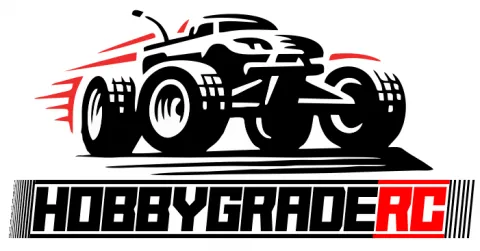Having issues with your RC car’s steering is frustrating, but the problem is usually something simple. This guide will walk through the top 10 most common reasons the steering fails on RC cars and practical tips to diagnose and fix them.
Table of Contents
Key Takeaways Table
| Reason | How to Fix |
|---|---|
| Dead transmitter batteries | Replace batteries in transmitter |
| Low receiver battery | Recharge or replace RC pack battery |
| Loose servo horn | Tighten servo horn screws |
| Stripped servo gears | Replace servo gears or get new servo |
| Disconnected servo plug | Reconnect loose plug from receiver |
| Damaged steering linkage | Replace bent steering linkage rods |
| Binding servo | Adjust trim and subtrim on transmitter |
| ESC not calibrated | Recalibrate ESC throttle range |
| Out of radio range | Move closer to transmitter, check antennas |
| Water damage | Dry out electronics, replace water damaged parts |
1. Dead Transmitter Batteries
The most common cause of a steering failure in an RC is simply having dead batteries in the handheld transmitter.
How to Fix:
- Check the battery level indicator on transmitter screen. Replace batteries if low.
- Try fresh new set of AA or AAA batteries based on model.
- Use rechargeable NiMH batteries and ensure they are fully charged.
With good batteries in the transmitter, the steering should function again. Always check this first if RC steering stops working.
2. Low RC Battery
If the rechargeable battery pack (LiPo battery) that powers your RC gets low on charge, the steering may cut out intermittently or completely.
How to Fix:
- Recharge battery pack to full and test steering again.
- If battery is old, replace with new high quality LiPo of same specifications.
- Ensure correct battery is used – check manual for required voltage (S).
Low voltage shutoff can disable steering as the battery discharges. Keeping battery fully charged prevents this.
3. Loose Servo Horn
The servo horn connects the steering servo to the linkage that turns the wheels. If the tiny screw that holds the servo horn to the servo spline is loose, the steering can fail.
How to Fix:
- Inspect servo horn and ensure the small mounting screw is tightened properly.
- If still loose, use threadlock on screw.
- Replace worn out servo horn with stripped screw hole.
Proper tightening and possibly a dab of threadlock blue on the servo horn screw can eliminate sloppy steering or disconnections.
4. Stripped Servo Gears
Inside the servo, small plastic or metal gears can become stripped due to excessive force or simply wear and tear. This can cause inconsistent or no steering movement.
How to Fix:
- Disassemble servo case and inspect gears for any stripped portions.
- If damaged, replace the servo gear set or replace entire servo.
- Avoid excessive force on the wheels that overloads the servo.
Repairing or replacing the servo gears will restore steering function.
5. Disconnected Servo Plug
The tiny 3-wire plug that goes from the steering servo to the receiver can come loose if exposed to vibration. This interrupts the signal and causes steering to fail.
How to Fix:
- Ensure plug is fully inserted in proper channel on receiver.
- Check wires for damage – repair or replace if the copper strands are severed.
- Add a servo saver foam pad or rubber band around servo to reduce vibration.
Properly reseating the servo plug into the receiver resolves issues from a loose wire connection.
6. Damaged Steering Linkage
Excess steering force or crashing can bend or damage the small metal linkage rods that connect the servo to the steering mechanism.
How to Fix:
- Inspect steering linkages and replace any that are badly bent.
- Upgrade to stronger steel rods if bending is a recurring issue.
- Ensure no binding preventing full left to right steering motion.
Swapping out a bent linkage rod takes just minutes and restores precise steering control.
7. Binding Servo
Improper subtrim or trim settings on the transmitter can make the servo bind at its end points and cause steering dysfunction.
How to Fix:
- Reset transmitter trim and subtrim back to zero/center position.
- Recalibrate servo electronically or by adjusting linkage.
- Update transmitter steering endpoints if needed.
Centering the trim and subtrim levels typically resolves servo binding that prevents full steering range of motion.
8. ESC Not Calibrated
Before first use, electronic speed controllers (ESC) need to be calibrated to set the full throttle range. If uncalibrated, steering may not work properly at low speeds.
How to Fix:
- Calibrate ESC by powering on while holding full throttle until hearing special tones.
- Ensure proper throttle motions when calibrating.
- Check ESC manual for steps to enter calibration mode.
Calibrating the ESC ensures glitch-free steering across the full throttle range.
9. Out of Radio Range
As you drive your RC farther away, eventually the radio connection from the transmitter will be lost, causing steering to stop responding.
How to Fix:
- Drive vehicle closer until steering resumes.
- Do not exceed rated radio range of transmitter/receiver (usually few hundred feet).
- Extend range with directional high gain antennas on Tx and Rx.
While tempting to drive to maximum range, steering dropouts will occur if too far from transmitter. Keep within reliable signal distance.
10. Water Damage
Driving through puddles or water deeper than the electronics can withstand can short out the receiver, ESC, or servo and lead to steering failures.
How to Fix:
- Fully dry out RC car airing out upside down and removing batteries.
- Replace any electronic components damaged by water – servo, Rx.
- Waterproof electronics and use marine grade lube to prevent future water damage.
Drying out and replacing any fried electronics will recover from steering issues in a waterlogged RC vehicle.
Steering Troubleshooting Tips
Beyond the top 10 reasons above, here are some useful tips for diagnosing steering problems:
- Check steering servo visually as you operate controls looking for movement.
- Listen for servo sounds – grinding could indicate gear damage.
- Ensure steering servo moves freely across full range without binding.
- Inspect steering linkage and rods for bends, wear or loose connections.
- Check wires for damage – severed servo plug wire strands will cause issues.
- Test servo and receiver with another battery pack if steering issues are intermittent.
- Try resetting transmitters and/or remapping servo direction.
- Use servo test function on transmitter to isolate servo.
- Replace servo if troubleshooting points to malfunction.
Thoroughly inspecting the mechanical and electrical components of the steering system will generally reveal the cause of most steering failures.
Conclusion
While steering failures can be annoying, a systematic approach combining visual inspection and process of elimination troubleshooting will typically uncover the underlying problem. Ensuring proper maintenance and electronics operation reduces the risk of issues occurring. With the diagnosis and repair tips provided, you’ll be able to efficiently get your RC vehicle steering working again.

